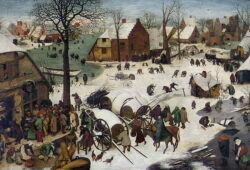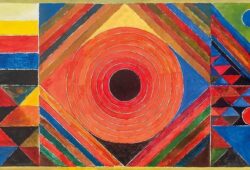Exploring the Enigmatic World of Paul Klee’s Paintings
 Posted On
Posted On
Paul Klee, a Swiss-born German artist, is celebrated for his exceptional contributions to the world of modern art. His paintings stand as an embodiment of his unique artistic vision, melding abstraction, expressionism, and surrealism into captivating works of art that have intrigued and inspired art enthusiasts for generations. In this article, we delve into the enigmatic world of Paul Klee’s paintings, exploring his artistic evolution and the themes that defined his work.
Paul Klee’s artistic journey began in the early 20th century, a time when the art world was undergoing a radical transformation. Influenced by a diverse range of artistic styles and movements, including cubism, expressionism, and surrealism, Klee synthesized these influences to develop his distinctive style. His works often straddle the boundary between abstraction and representation, inviting viewers into a realm where the familiar is intertwined with the mystical.
One of Klee’s remarkable qualities was his ability to convey complex ideas and emotions through simple and seemingly childlike forms. His painting “Senecio” is a striking example of this. Completed in 1922, the painting features a simplified face with a circular head and angular features. The seemingly childlike representation of the face hides a deeper exploration of the human condition, expressing the inevitability of aging and the passage of time through a few carefully chosen lines and shapes.
Klee’s works are often imbued with symbolism and mysticism. He had a deep interest in music and often used musical notations as a form of visual expression. “Ad Parnassum,” created in 1932, is a masterful example of this technique. In this painting, Klee uses Colour and form to translate the harmony and discord of music into a visual composition. The painting’s rhythmic lines and geometric shapes evoke a sense of musicality, inviting viewers to perceive the hidden melodies in his work.
Klee’s art is also characterized by his fascination with the natural world. “Fish Magic” (1925) is a testament to his affinity for nature. In this painting, he combines the ordinary with the extraordinary, merging fish and fantastical creatures in a watery world. Klee’s ability to blend the real and the imaginary in his art invites us to explore the intricate relationship between humans and the environment, raising questions about our impact on the natural world.
Throughout his career, Klee’s use of Colour was both bold and purposeful. He often used a wide range of hues to create emotional and psychological depth in his paintings. “Twittering Machine” (1922) is an excellent illustration of his mastery of Colour. The mechanical-looking contraption, depicted in a whimsical, almost surreal manner, stands in stark contrast to the vibrant, dynamic Colours surrounding it. Klee’s use of Colour in this piece enhances the sense of both fascination and foreboding.
Klee’s work reflects the shifting cultural and political landscapes of his time. As a teacher at the Bauhaus school, he was deeply affected by the rise of the Nazi regime, which led to his expulsion from the school. This period in his life is marked by darker, more sombre paintings that reflect his anxiety and concern for the world. “The Twittering Machine” and “Fire in the Evening” are two examples of this transitional phase, where the shadows of the era loom large over his work.
In conclusion, Paul Klee’s paintings invite us to journey through a world that is both enigmatic and captivating. His unique artistic style, blending abstraction, representation, and symbolism, challenges viewers to see the world through a different lens. His exploration of the natural world, the interplay of music and art, and his response to the tumultuous times he lived through make his art a rich tapestry of emotion, symbolism, and meaning. Paul Klee’s work continues to inspire and intrigue art enthusiasts, reminding us that the power of art lies in its ability to transcend time and speak to the human experience.



